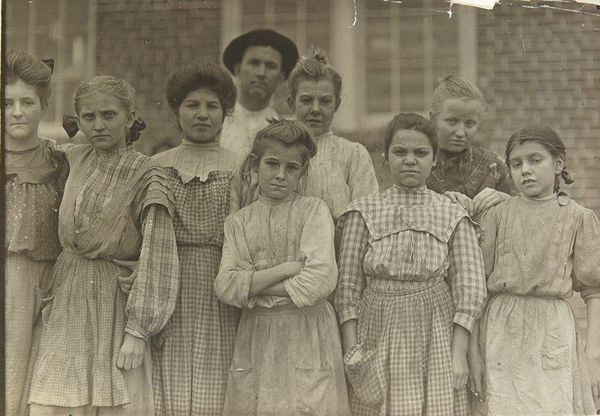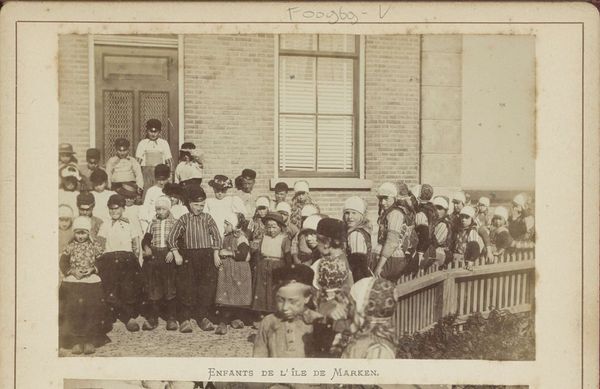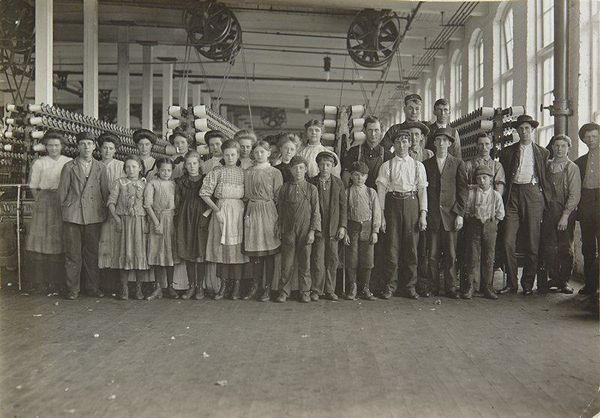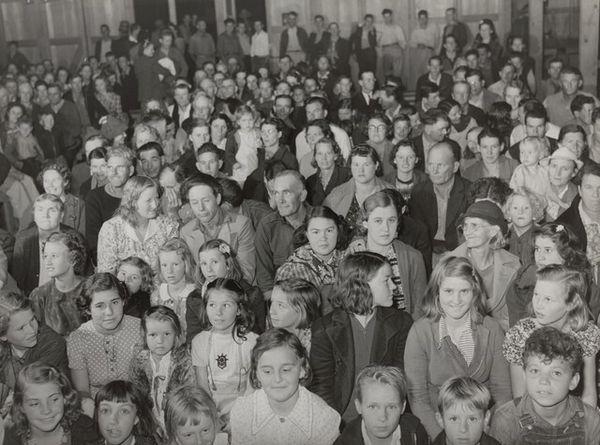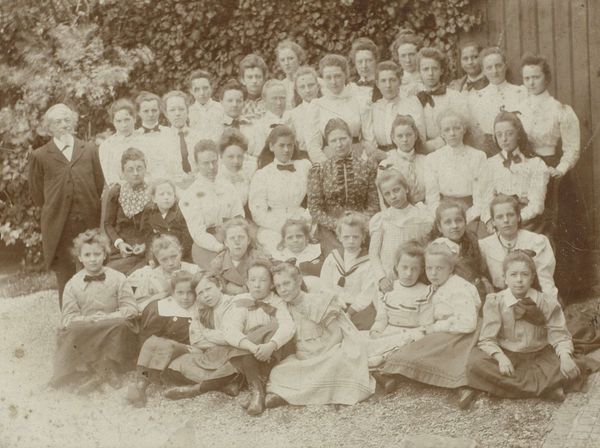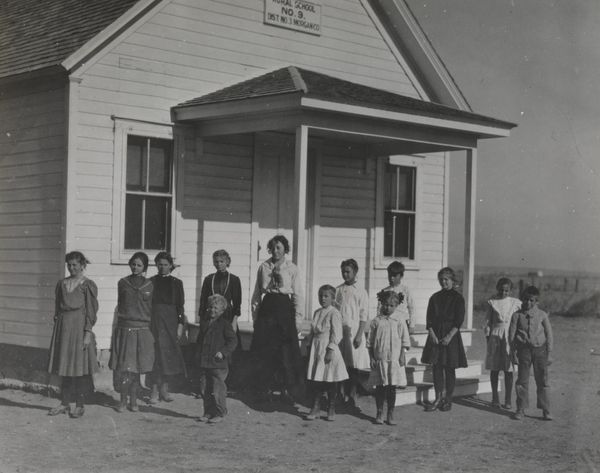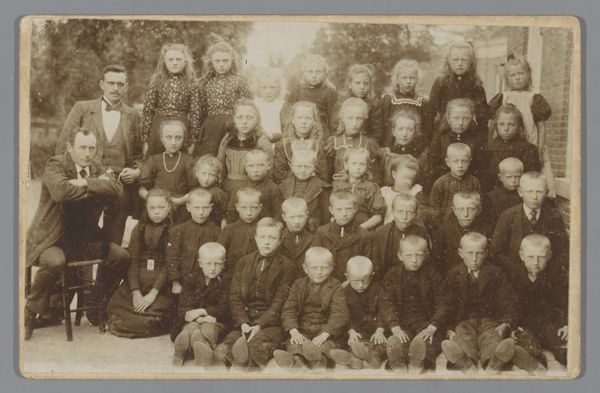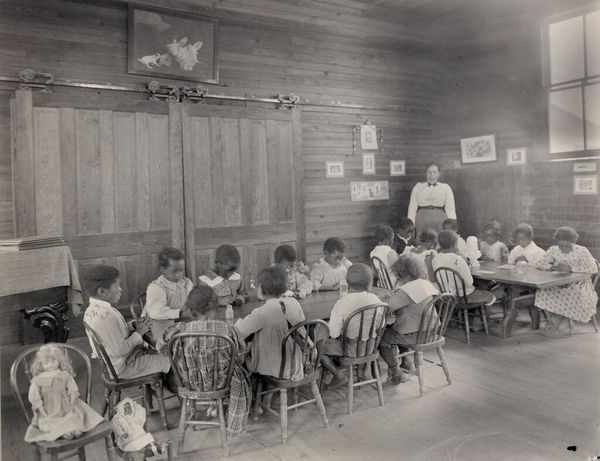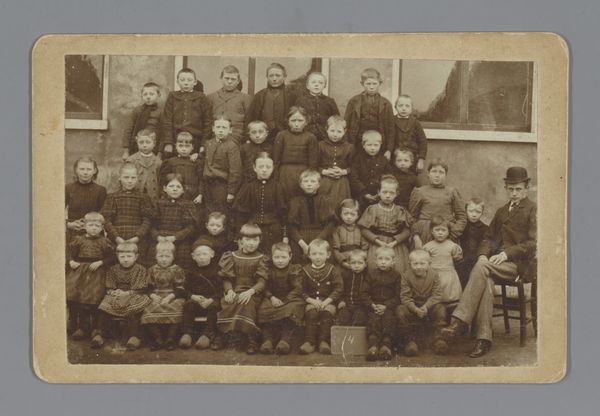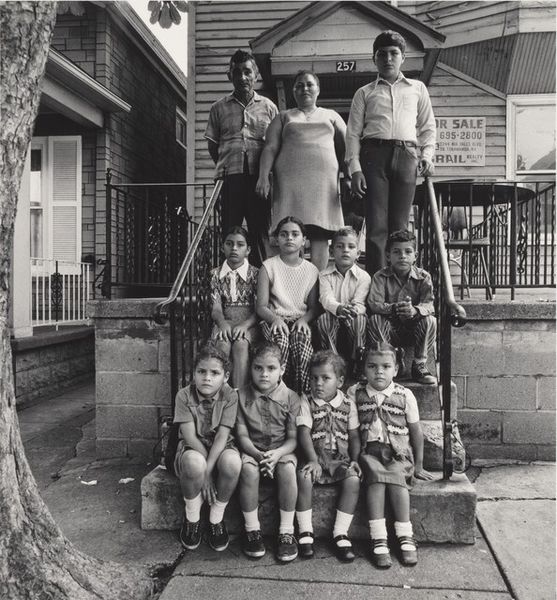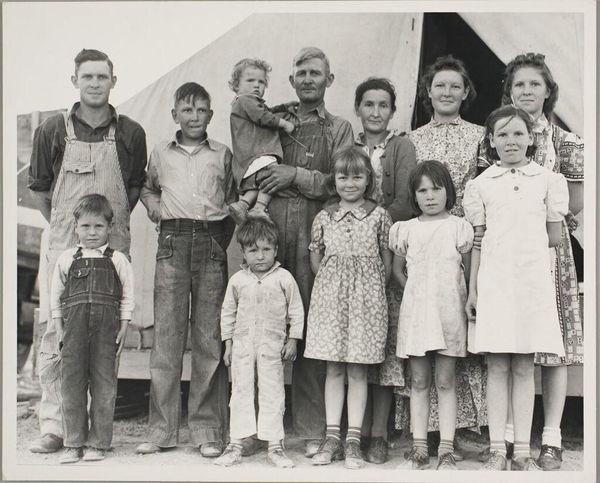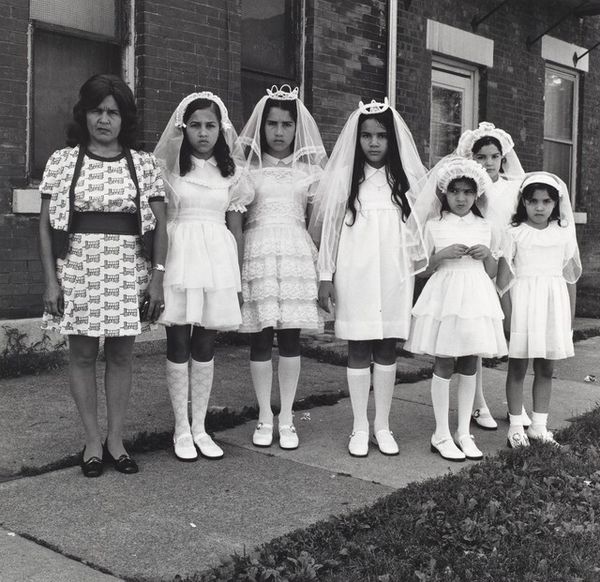
Dimensions: image: 107 x 167 mm
Copyright: CC-BY-NC-ND 4.0 DEED, Photo: Tate
Curator: This is a photograph by Lewis Hine, "Knitters in London (Tennessee) Hosiery Mills." The date is unknown. Editor: They look so serious, lined up like that. Makes me think of a school portrait, but the setting feels so much harsher. Curator: Absolutely. Hine's work often documented labor conditions. The materiality of their clothing, the brick facade behind them—it all speaks to the realities of industrial labor. Editor: It's chilling to imagine them returning to those machines after this photo, the incessant noise and repetitive motions... Thank you, Lewis Hine, for immortalizing them, indeed.
Comments
tate 8 months ago
⋮
http://www.tate.org.uk/art/artworks/hine-knitters-in-london-tennessee-hosiery-mills-p79936
Join the conversation
Join millions of artists and users on Artera today and experience the ultimate creative platform.
tate 8 months ago
⋮
This object is one of a group of twenty-two black and white photographs in Tate’s collection (Tate P79917–P79938), which all relate to American photographer Lewis Hine’s work for the National Child Labor Committee (NCLC) in the US during the 1910s. Eleven of the photographs are Hine’s own documents of various panels that he made for exhibitions of his work. These combine text, photographs and drawn or painted pictures that provide information about children’s working conditions and use various arguments to suggest that child labour should be reformed or banned. While most primarily focus on the ills of child labour (‘Industry saves at society’s expense’), some highlight instances of recent reforms, extolling their benefits (‘New Orleans conditions: these high standards pay’). The accompanying images on these panels generally include photographs and illustrations of child labourers, as well as maps of America and representations of homes and workplaces. The other ten photographs are prints of pictures that Hine took of working children, some of which are also used in the exhibition panels. Most of these show children within or outside of their workplaces, although some depict related scenes, including one in which a boy attends juvenile court ‘charged with stealing a bicycle’. The photographs vary in size and most incorporate a photocopy of a caption. The captions relating to the photographic images (as opposed to the exhibition panels) often specify a number, such as ‘Neg. #3785’, and state the location in which the picture was taken, the date, and information about the subjects such as their age and profession.
